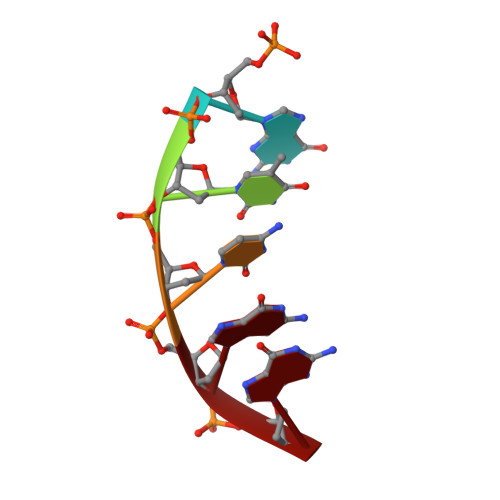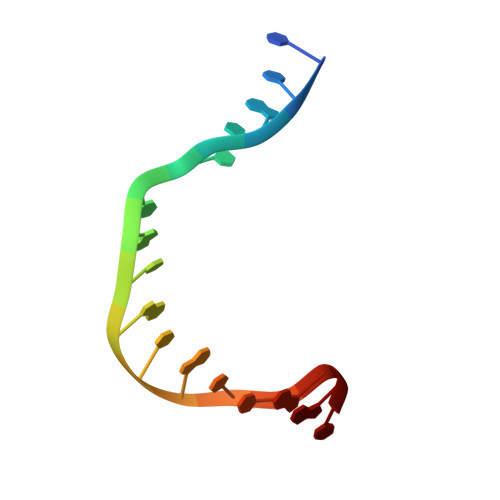Mechanism of Deoxyguanosine Diphosphate Insertion by Human DNA Polymerase beta.
Varela, F.A., Freudenthal, B.D.(2021) Biochemistry 60: 373-380
- PubMed: 33475337
- DOI: https://doi.org/10.1021/acs.biochem.0c00847
- Primary Citation of Related Structures:
7K96, 7K97 - PubMed Abstract:
DNA polymerases play vital roles in the maintenance and replication of genomic DNA by synthesizing new nucleotide polymers using nucleoside triphosphates as substrates. Deoxynucleoside triphosphates (dNTPs) are the canonical substrates for DNA polymerases; however, some bacterial polymerases have been demonstrated to insert deoxynucleoside diphosphates (dNDPs), which lack a third phosphate group, the γ-phosphate. Whether eukaryotic polymerases can efficiently incorporate dNDPs has not been investigated, and much about the chemical or structural role played by the γ-phosphate of dNTPs remains unknown. Using the model mammalian polymerase (Pol) β, we examine how Pol β incorporates a substrate lacking a γ-phosphate [deoxyguanosine diphosphate (dGDP)] utilizing kinetic and crystallographic approaches. Using single-turnover kinetics, we determined dGDP insertion across a templating dC by Pol β to be drastically impaired when compared to dGTP insertion. We found the most significant impairment in the apparent insertion rate ( k pol ), which was reduced 32000-fold compared to that of dGTP insertion. X-ray crystal structures revealed similar enzyme-substrate contacts for both dGDP and dGTP. These findings suggest the insertion efficiency of dGDP is greatly decreased due to impairments in polymerase chemistry. This work is the first instance of a mammalian polymerase inserting a diphosphate nucleotide and provides insight into the nature of polymerase mechanisms by highlighting how these enzymes have evolved to use triphosphate nucleotide substrates.
Organizational Affiliation:
Department of Biochemistry and Molecular Biology and Department of Cancer Biology, University of Kansas Medical Center, Kansas City, Kansas 66160, United States.




















